1
Where do green woodpeckers live in the UK?
Although they are mostly sedentary, the green woodpecker has slowly expanded its range in Britain, and bred for the first time in Scotland in 1951. However, they are still absent from Ireland and the Isle of Man, and only colonised the Isle of Wight in 1910 despite being more common in the south, suggesting a reluctance to cross water.
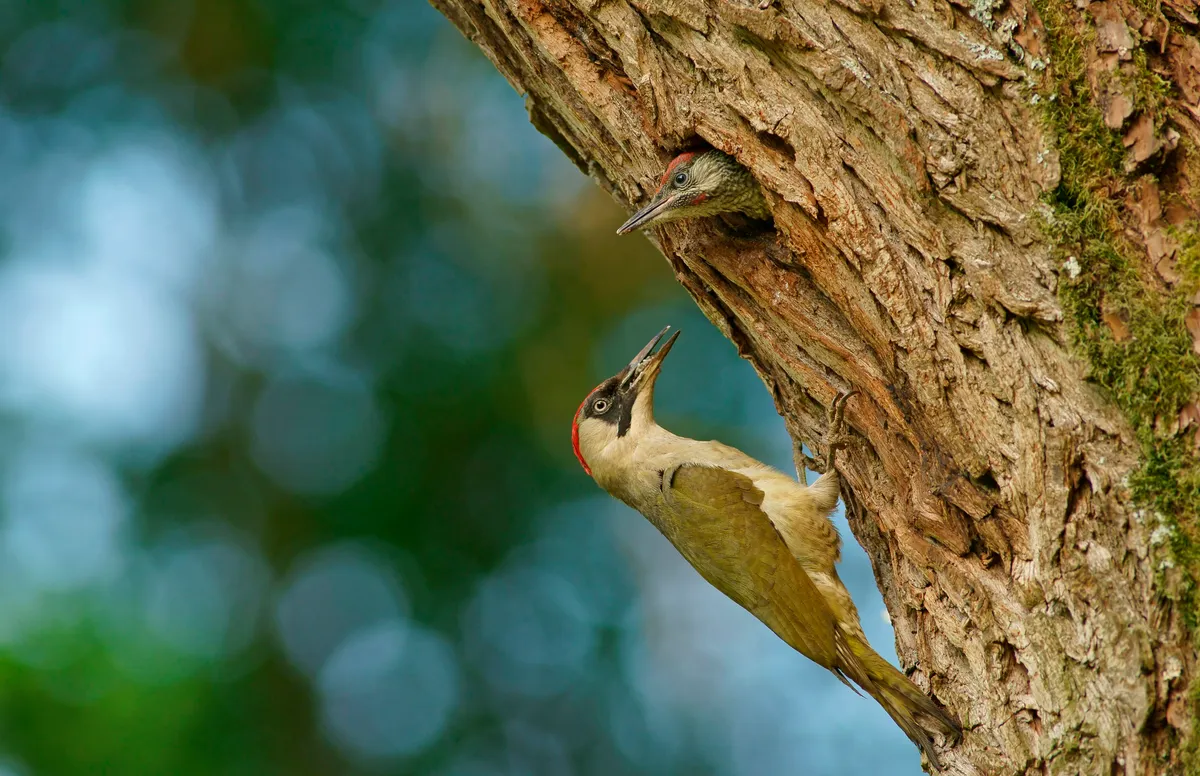
2
What do green woodpeckers eat?
If you are lucky enough to have green woodpeckers visiting your garden, then you will most likely have seen them on the lawn. This is because the green woodpecker diet consists mainly of ants – adults, larvae and eggs. They will eat other invertebrates, pine seeds and fruit, but usually only in the winter when ants become increasingly hard to find.
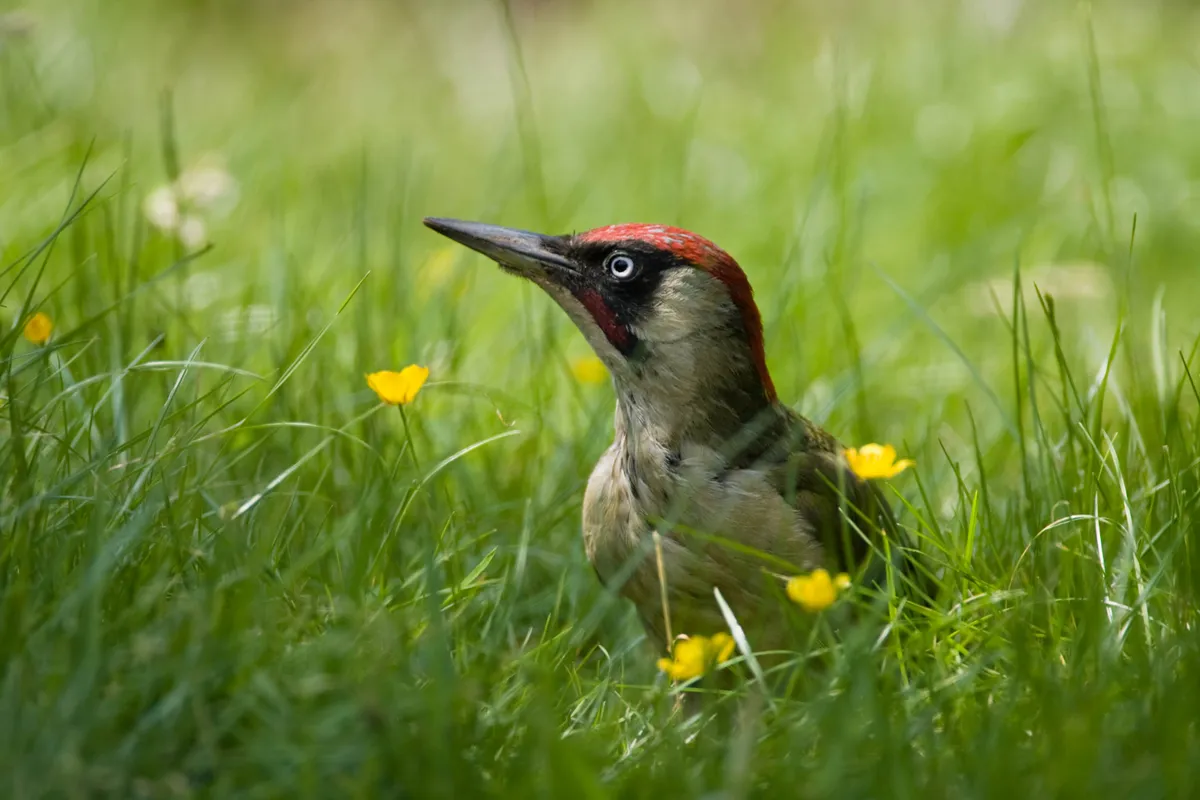
3
Woodpeckers that don't peck much wood
Compared to other woodpeckers, green woodpeckers have relatively weak bills. When excavating their nest holes in trees, they usually only chisel into soft wood, and they rarely drum to communicate.
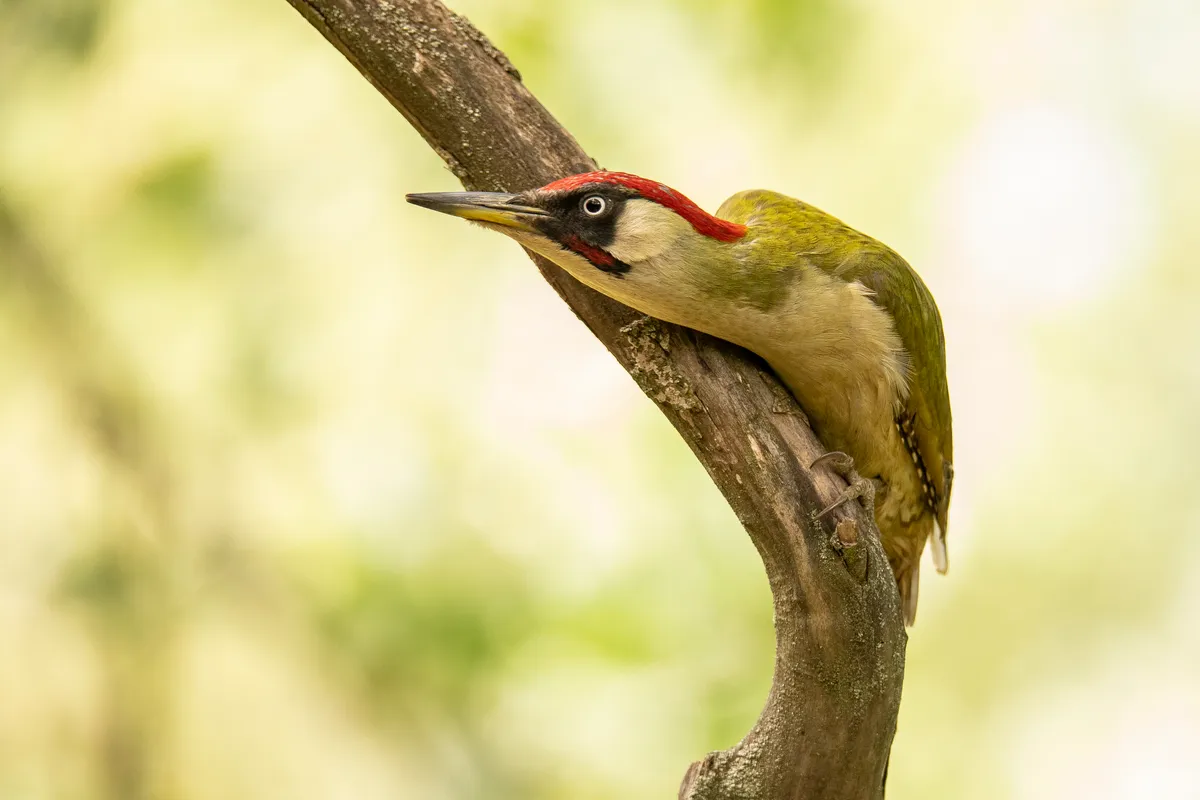
4
What does the green woodpecker's call sound like?
Green woodpeckers are very vocal and have a recognisable loud, laughing call known as a 'yaffle', which is often the only way you know a green woodpecker is nearby, as they tend to be quite wary birds. The yaffling is by far the most distinctive sound that green woodpeckers make, but you could also hear their song, which is a series of slightly accelerating 'klü' sounds.
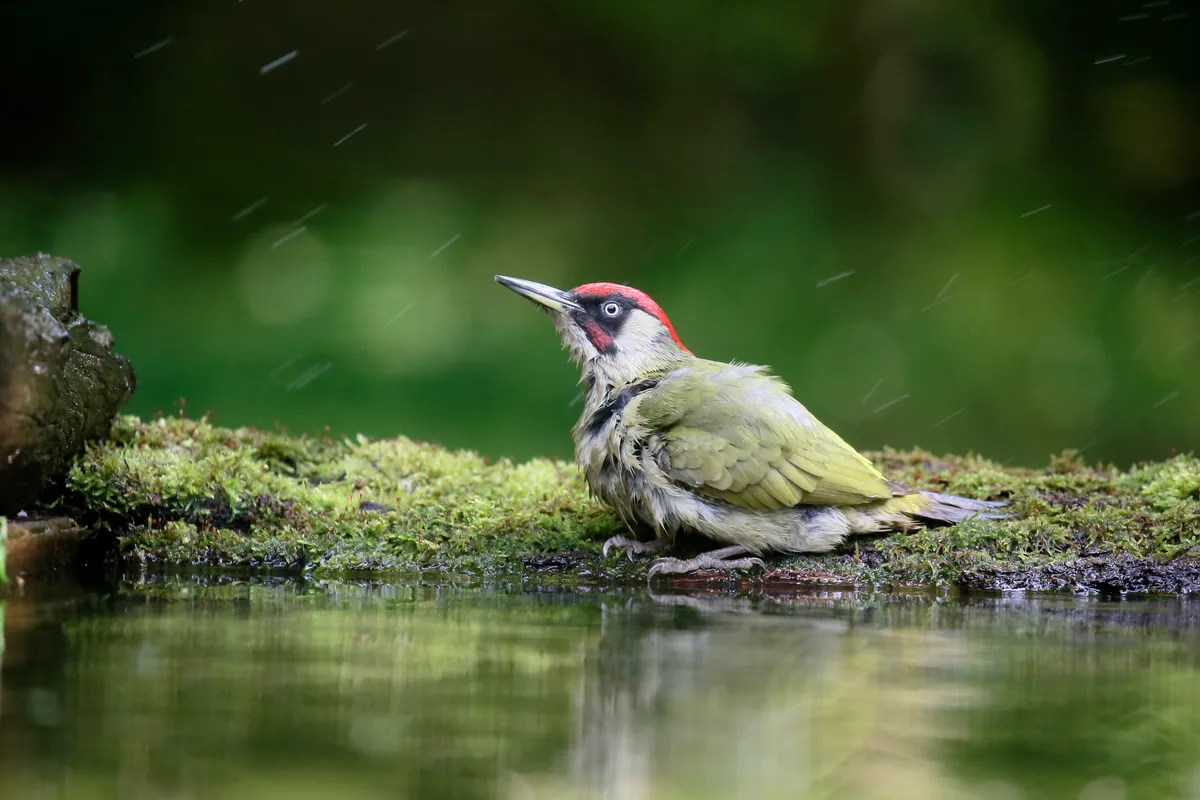
5
Alternative names for the green woodpecker
The green woodpecker has been given many folk names over the years, most commonly 'yaffle' or 'yaffle bird' after its well known call. There are a range of others, some referencing their yaffling call, some referencing their mythical ability to summon rain, and others that just sound fun. They include yaffingale, yappingale, laughing Betsey, weather cock, rain bird, wet bird, nickle, Jack Eikle and our favourite of all, nicker pecker.
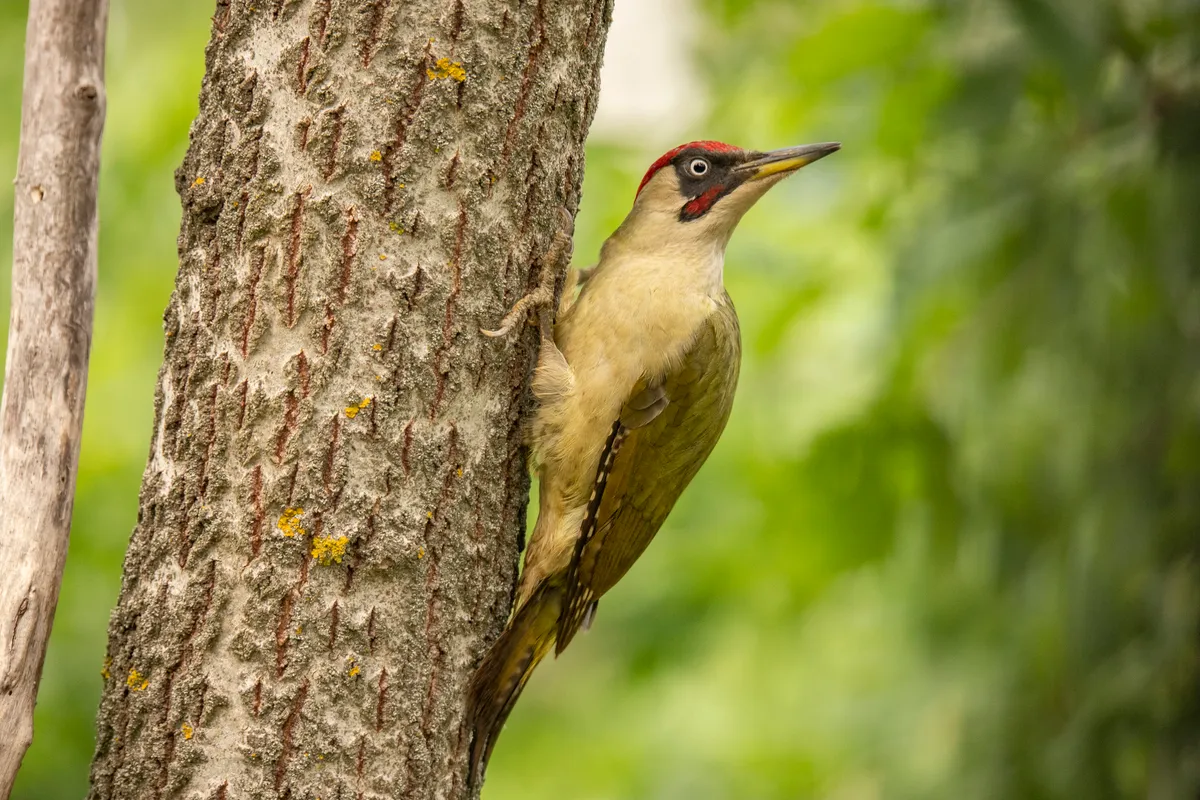
6
Green woodpeckers are antisocial
Although green woodpeckers can pair for life, they are antisocial outside of the breeding season and spend most of the year living alone. The two halves of a pair may roost near to each other during the winter, but they won't re-establish their pair bond until March. This is achieved through the use of loud calls, and a period of courtship.
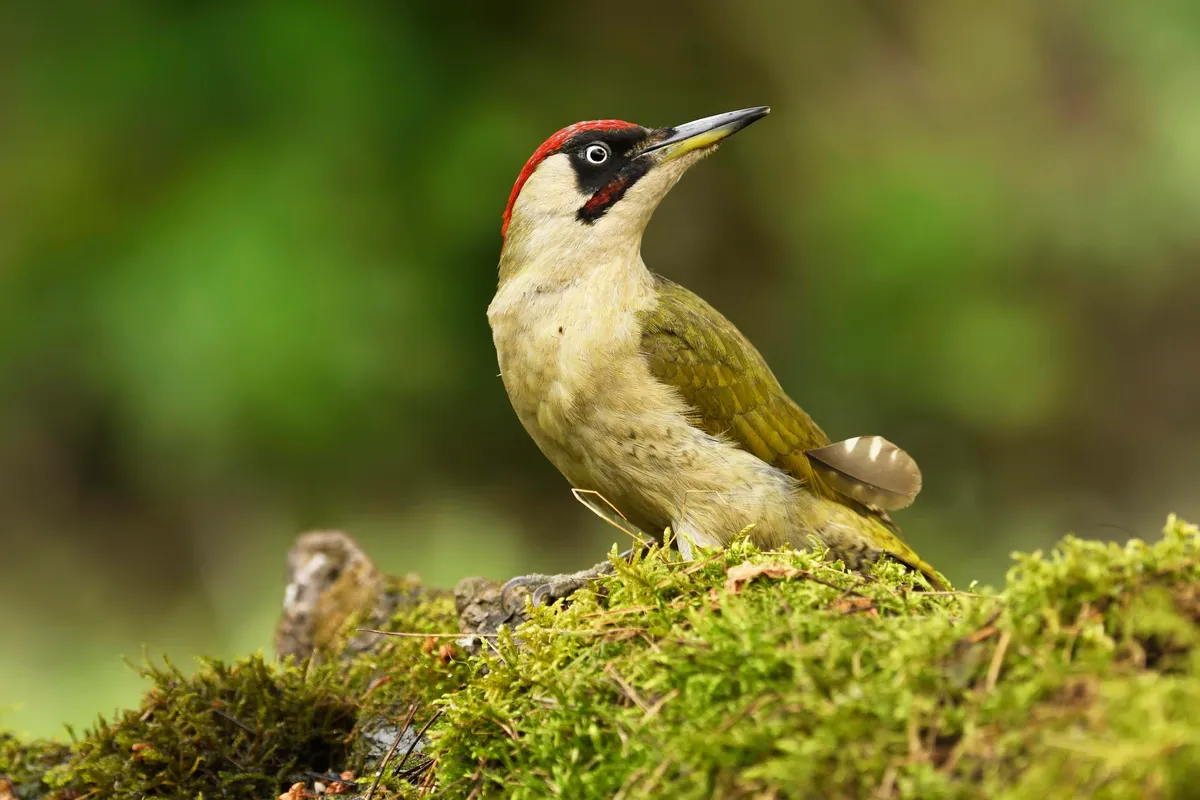
7
Green woodpecker nesting and breeding
Green woodpeckers only have one brood of five to seven eggs and usually lay their eggs in May. They usually nest in live trees and will often use the same tree each year, if not the same hole.
On fledging, each parent usually takes half of the young – quite a common occurrence in birds – and shows them where to feed. It is at this time of year when they may be brought to garden lawns to feed, providing a great opportunity to brush up on your ID skills.
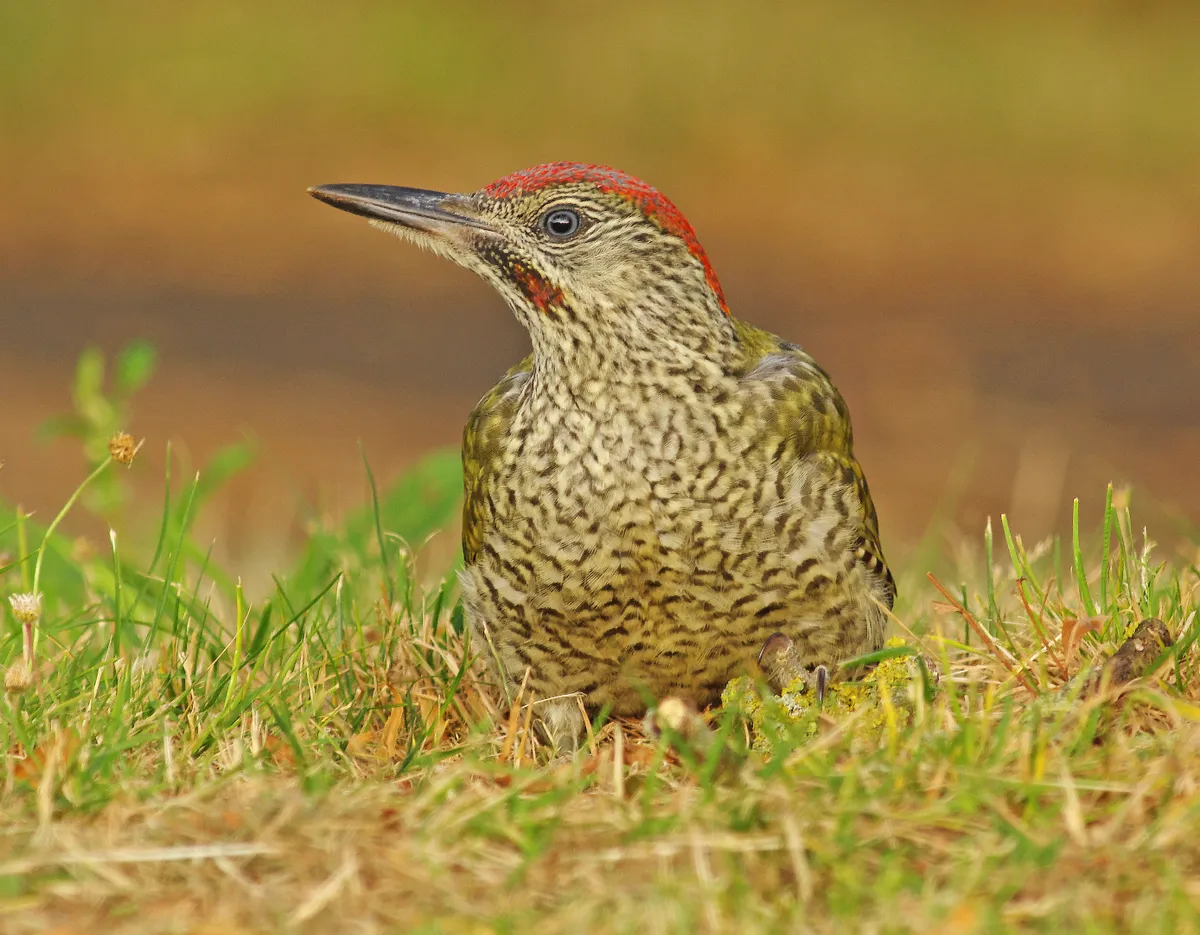
8
How to identify male and female green woodpeckers
Male and female green woodpeckers look similar, but adult males will have a lot of red in the moustachial stripe (see photo above), while there is none in that of an adult female. All ages and sexes have bright green plumage with yellow rumps and red caps, but in juvenile green woodpeckers, the plumage is streaked with grey.
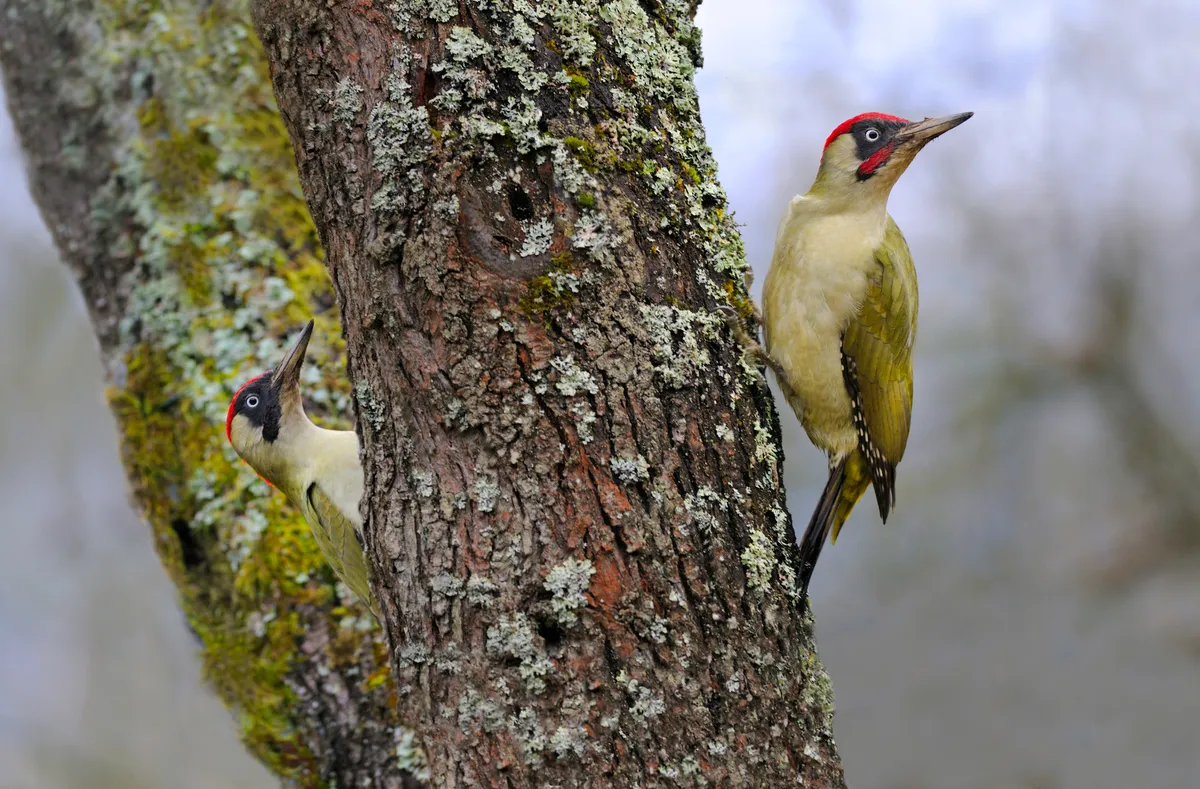
The green woodpecker was the BTO garden bird of the month for July 2015.The British Trust of Ornithology (BTO) works in partnership with over 40,000 volunteer birdwatchers to chart the fortunes of UK birds.Among the surveys that we coordinate is our popular Garden BirdWatch, the largest year-round survey of garden birds in the world.
Each month we highlight a bird for you to look out for in your garden.

